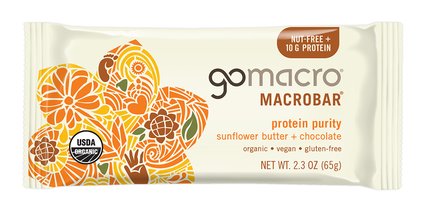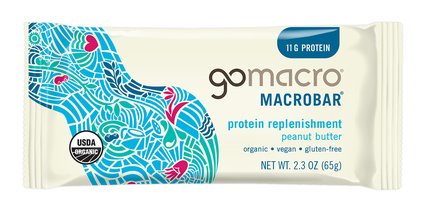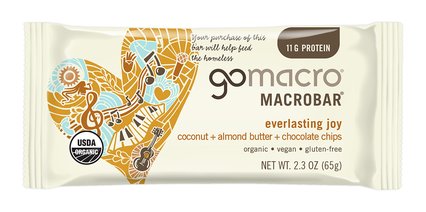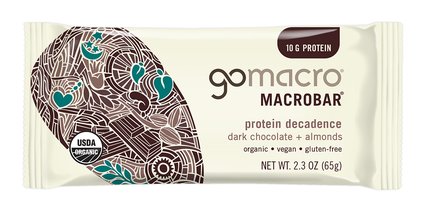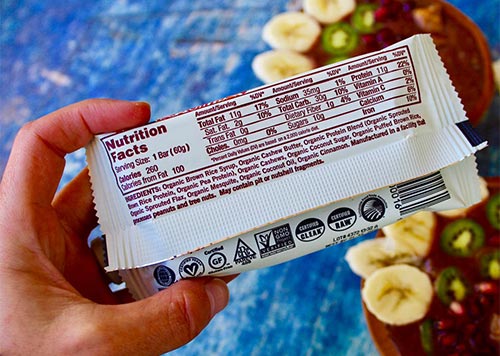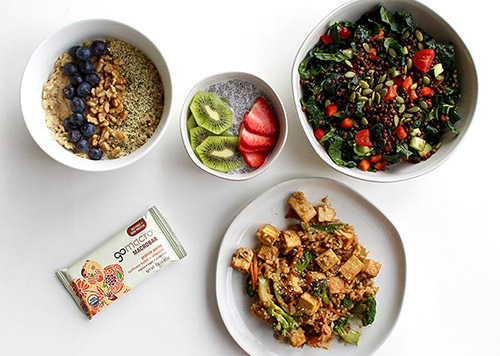9 Foods High in FODMAPs + IBS Diet Treatment Tips
Foods high in FODMAPs can be challenging to identify and avoid. After all, many foods that are otherwise considered healthy and nutritious may be high in FODMAPs that can cause irritation for people with IBS or other digestive issues.
While there are still plenty of foods you can eat with IBS, sometimes it’s easier to understand what high FODMAP foods to avoid so that you can help mitigate your symptoms and get to the root of your digestive problem as quickly as possible.
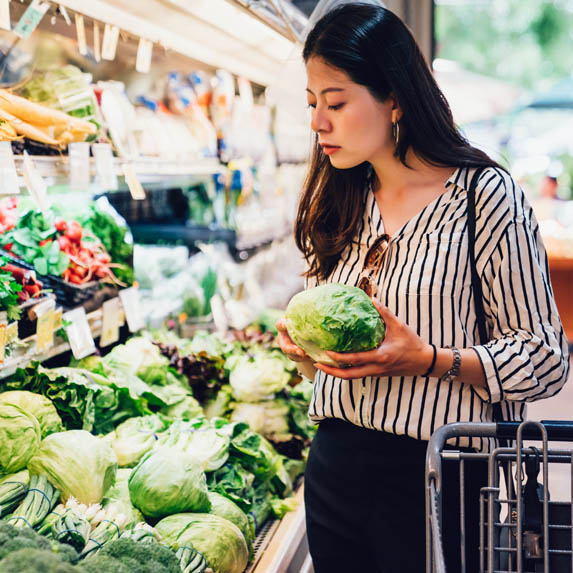
What is FODMAP?
FODMAP stands for ‘fermentable oligo-, di-, and mono-saccharides and polyols.’ These are highly fermentable carbohydrates that are difficult for the small intestine to absorb. They can lead to gas, diarrhea, constipation, cramping or bloating in individuals with certain gastrointestinal disorders.
As Angie Asche, MS, RD, CSSD emphasizes in our FODMAP Meal Plan, only those with IBS, IBD, or another digestive problem should avoid FODMAPS – and only under supervision of a healthcare professional. Even then, strict elimination of high FODMAP foods should be temporary as you and your doctor determine what foods you tolerate well.
For most healthy individuals, foods high in FODMAPs pose no health risk and are a healthy part of a balanced diet.
Where are FODMAPs found?
FODMAPs are found in certain foods across almost every category, from dairy to wheat products to beans and even many fruits and vegetables. All foods high in FODMAPs fall into one or more of the following categories:
-
High in Fructans or Galactans: These two molecules make up the “Oligosaccharides” part of the FODMAP acronym. They’re commonly found in wheat, barley, pistachios, cashews, and beans.
-
High in Lactose: Lactose, found in dairy products, is the most common food source of “disaccharides,” which are molecules made up of two sugars joined together.
-
Excess Fructose: Fructose, a sugar commonly found in fruit, is easily absorbed by the body when there’s an equal or greater amount of glucose also present. But when a food contains an excess of fructose, such as high-fructose corn syrup, IBS sufferers may have difficulty digesting it.
-
High in Polyols: Sugar alcohols like malitol, xylitol, or sorbitol
Some foods, such as oats or coconut milk, are only high FODMAP in large quantities, so you may be able to enjoy small servings of many foods when limiting FODMAPs. That’s why it’s vital to work closely with a dietician or doctor to hone in on the foods that your body can and cannot tolerate.
List of High FODMAP Foods
1. Garlic
Garlic can give almost any savory recipe a serious flavor boost, but it’s also one of the most common digestive irritants. This is because garlic contains a high concentration of short-chain carbohydrates called fructans. If you’re missing that garlicky flavor, try cooking or drizzling your food with a bit of garlic-infused oil.
2. Onions
Another very common IBS trigger food is onion. Just like garlic, the FODMAP culprit in onions is fructans. Most other alliums like shallots, leeks, and the white bulbs of scallions/green onions are also high in FODMAPs, so you’ll want to avoid them on a FODMAP diet. Swap them out for chives or the green parts of scallions for a slightly milder onion kick in your favorite dishes.
3. Beans and Peas
Since they’re high in FODMAPs, beans, peas, and lentils are difficult for the digestive system to break down, which can lead to gas and bloating, especially for those with IBS. For now, skip the baked beans, soybeans, kidney beans, peas, and lentils. Instead, try green beans, bean sprouts, or small servings (around ¼ cup) of black beans or lentils.
4. Wheat and certain other grains
Wheat, barley, rye, and wheat-containing products like breads, cakes, pasta, cereal, and pastries are high in FODMAPs, so they’re a key food group to avoid for management of IBS symptoms. In fact, a 2015 study suggested that a gluten-free diet may improve IBS symptoms in around half of the population. Gluten intolerance and Celiac disease sometimes share similar digestive symptoms to IBS, so it can be helpful to rule out gluten intolerance first if you present with diarrhea after eating gluten products.
5. Most forms of dairy
Cow’s milk, goat milk, and sheep milk are all high in FODMAPs, as are many foods that are made with them. Yogurt, kefir, ice cream, gelato, ricotta cheese, cream, and sour cream (greater than two tablespoons) all fall into this category.
You should also approach cashew milk, coconut milk, pea milk, and oat milk with caution. While not true dairy products, these alternatives are high in FODMAPs in servings over ½ cup.
6. Many types of drinks
Sodas with high-fructose corn syrup, sports drinks, apple juice, mango juice, kombucha, and even chai and strong herbal teas are high in FODMAPs at any quantity. Other fruit juices, beer, and wine are okay if you’re just having a single serving. Whey protein drinks are also high in FODMAPs unless they’re lactose-free.
7. High Fructose Fruits
As previously mentioned, fruits with a high ratio of fructose to glucose or high in fructans can cause IBS symptoms. These include apples, apricots, avocado, ripe bananas, cherries, blackberries, dates, grapefruit, mango, nectarines, peaches, plums, pears, pomegranate, watermelon, and more. Many dried fruits, like dried pineapple and raisins, are also high in FODMAPS.
8. Some nuts
When enjoyed in moderation, most nuts are safe for people with IBS, and are a great source of plant-based protein, fiber, and micronutrients. However, cashews and pistachios are high-FODMAP nuts, so it’s best to look for alternatives. If you’re avoiding gluten, keep an eye out for baked goods that use almond meal or other nut flours since larger quantities of nuts can push them into the high-FODMAP category.
9. Certain sweeteners
As the name would suggest, high-fructose corn syrup is very high in fructose, which means it’s a common trigger for IBS symptoms. It hides in many processed foods and condiments, so check labels carefully. Sugar alcohols are also known to cause digestive distress as they contain polyols. Watch out for any sugar-free sweets containing sugar alternatives that end in “-ol,” like maltitol, mannitol, sorbitol, or xylitol. The sugar alcohols isomalt and inulin are also high in FODMAPs.
Tips for IBS Pain Relief
-
IBS symptoms can range from uncomfortable to debilitating, and at times it can feel like you’re planning your entire life around flare-ups. As you work with a healthcare provider to get to the root cause, there are some things you can do to ease symptoms.
-
Keep a detailed food diary and take note of any symptoms you experience after each meal or snack so you can identify trends. It can also be helpful to note if you’re having a stressful day, if female where you are in your cycle, and how you’re sleeping to see if you find any connections.
-
Eat on a consistent predictable schedule. Try not to skip meals. Depending on your symptoms, this might be a few large meals or several small meals.
-
Gentle to moderate exercise can help food move through your digestive tract and stimulate healthy contraction of the intestines.
-
Find healthy ways to relax, such as deep breathing exercises, meditation, yoga, or soothing hobbies. Stress is a common IBS trigger, so getting your body out of “fight or flight” mode can sometimes soothe digestive distress.
-
Ask your doctor about a probiotic or digestive enzyme. While they’re not a cure-all, some people with digestive issues find relief from certain strains of probiotics.
The bottom line
If you’re suffering from IBS, it can feel like managing symptoms is a full-time job. Limiting or eliminating FODMAP foods in partnership with a healthcare professional is a great way to get to the root of the problem so you can enjoy life without digestive worries.
While knowing what foods to avoid with IBS is the first step in finding your trigger foods, remember there are still many low FODMAP snacks you can enjoy that help soothe IBS.
Check out these vegan and FODMAP-friendly meal plans for even more ideas!
